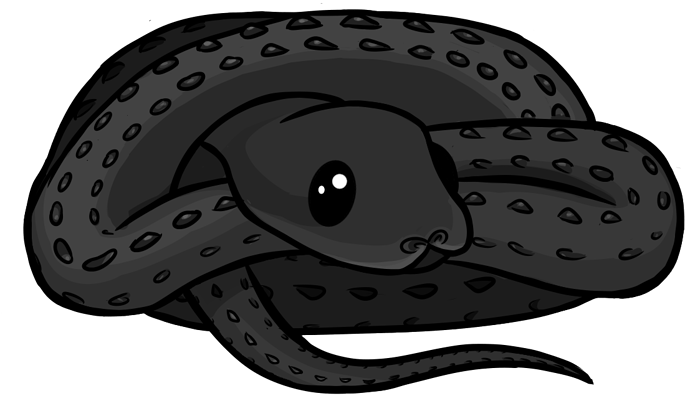Hey folks! Thought I would share my most recent study on the diet of Dragon snakes that led me to conclude that tadpoles and frogs should be fed as the staple of their diet, with fish serving as a supplement only.  It’s pretty “wordy” and unexciting to read, but I enjoy sharing as much information here as I can and figured I’d leave it here for those that may be curious about the contents of the study. I added a cute icon I drew of a Dragon Snake to make it more interesting, though.
It’s pretty “wordy” and unexciting to read, but I enjoy sharing as much information here as I can and figured I’d leave it here for those that may be curious about the contents of the study. I added a cute icon I drew of a Dragon Snake to make it more interesting, though. 
Comparative Analysis of Nutritional Data Between Frogs and Fish in the Diet of Xenodermus javanicus
Study objective: This project determined the effects of species-specific diets on the snake species known as the Dragon snake ( Xenodermus javanicus ), using data collected through clinical observations, to compare the nutritional data of each prey species and improve captive husbandry methods.
Design: The data for this study was collected over the course of two years, from July 1st of 2020 to July 2nd of 2022. The prey species used in the study included Green Tree frog ( Dryophytes cinereus) tadpoles and frogs, American Bullfrog ( Lithobates catesbeianus ) tadpoles and frogs, western mosquitofish ( Gambusia affinis ), and variable platyfish ( Xiphophorus variatus). The prey species were distributed equally in corresponding size, quantity, and frequency throughout the study.
Twelve subadult Dragon snakes were split into three groups for the study; Group A, Group B, and Group C, respectively. Group A was fed a diet consisting exclusively of Green Tree frog and American Bullfrog tadpoles and frogs. Group B was fed a diet consisting exclusively of western mosquitofish and variable platyfish. Group C was fed an equally mixed diet, in which half consisted of frogs and tadpoles, and the other half consisted of fish.
Direct comparison of dietary data was made using individual dietary data (IDS) and clinical observations that recorded five categories of individual and group data: body condition, feeding response, behavior, alertness, and overall health.
Main results : After six months, notable differences in alertness and behavior emerged in Group B. Snakes in Group A and Group C appeared much more alert than those in Group B. Additionally, snakes in both Group A and Group C appeared more inquisitive about their surroundings. Snakes in Group A were the most reactive to stimuli compared to those in Group B and Group C. Almost all snakes in Group B had reduced reactivity compared to snakes in Group A and Group C. Snakes in Group B did not exhibit the same extent of curious behaviors recorded in Group A and C, and generally remained stationary in one location of their enclosure.
After one year, differences in body condition and further reduced alertness began to emerge. Snakes in Group A had slightly improved body condition, while snakes in Group B had noticeably reduced body condition. In Group C, the body condition in all but one snake had reduced. Snakes in Group B and C also appeared more sluggish and less alert compared to those in Group A. After two years, significant differences in all five categories were recorded between the three groups. Snakes in Group A had superior body condition to those in Group B and C. Snakes in Group A had maintained a strong feeding response, whereas those in Group B had a much weaker response to food, with some refusing a few of their meals. Snakes in Group A were significantly more alert and reactive than those in Group B, and slightly more so than those in Group C. Snakes in Group A also appeared healthier overall compared to those in Group B and C.
Conclusions : Results suggest that frogs and tadpoles are more nutritionally beneficial for Xenodermus javanicus , whereas fish do not meet the nutritional needs of the species. To improve captive husbandry and care, it is concluded that frogs and tadpoles should be fed as a staple of the diet of X. javanicus , and fish should only serve as a supplement to their diet.
